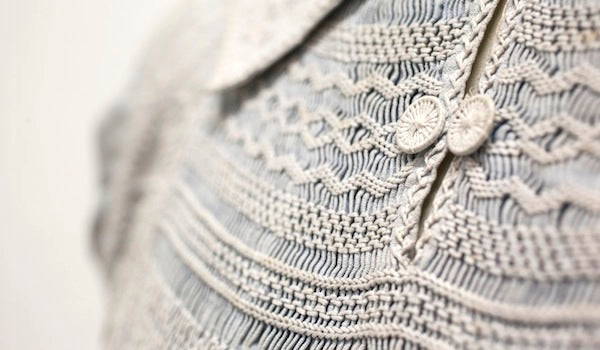
SMOCK VALUE
 Image: Photography by Claudia Brookes.
Image: Photography by Claudia Brookes.
Smocks are hardwearing ‘overalls’ that became common on English farms during the 18th and 19th centuries. As revealed by those that survive in museums of costume and rural life, these extraordinary garments combined linen, simple design, and intricate stitching. Cut from rectangular sections of cloth, they were hemmed and stitched by hand into one of three styles.


Their appearance in rural art and literature reveals that they were in common usage from the second half of the 18th century and well established by the beginning of the 19th. In William Pyne’s 1805 Costume of Great Britain, a smock protects a water cart driver from filthy roadworks. Another plate shows a carter dressed in a long smock for warmth. Shepherd Holland stood proudly in his smock in the foreground of George Garrard’s famous 1804 painting of the shearing at Woburn Abbey, and smocks adorned other jobbing stockmen in the crowd. Similar garb appeared in many livestock portraits of the early 19th century, offering a concise visual means for historians and curators of today to distinguish the painting’s workers from its gentlemen.

The use of smocks as workwear began to decline rapidly in the 1850s, a change lamented by Thomas Hardy in his 1895 preface to Far From the Madding Crowd where he noted that the 'shearingsupper, the long smock-frocks, and the harvesthome' had 'nearly disappeared' as part of a wider break of continuity in local traditions, history, folklore, and what he called 'eccentric individualities'.

As smock use waned, popular characterisation of England’s working people as simple and unlettered 'folk' took off, and interest in examining the quirks of these lower social orders grew. Smocks were suddenly redolent not only of pastoral and practical value, but seen to harbour in their stitches and pleats the essence of English tradition itself, a past deemed worthy of salvage by romantics and antiquarians....
Excerpt from the article Smock Value: the country life of the smock, written by Dr Oliver Douglas in Selvedge Issue 75 Endeavour.

We're delighted that clothing designer Lu Flux will be hosting a workshop all about smocking for Selvedge.
Flux makes heirloom garments using vintage, natural and organic cloth. Each item is individually hand cut and embellished with traditional techniques including smocking, patchwork and embroidery to produce unique, wearable garments.
During this workshop participants will be taught how to make and embroider a traditional English smocking sampler.
Find out more about Smocking with Lu Flux and book tickets here:


4 comments
Love love love this smocking blouse..it’s absolutely beautiful..We had tiny smocked dresses when we were children, that my Grandmother had made…..I would love to bring this model back to retail….Thanks for sharing
Stunning and beautiful. It’s interesting how the upper classes dressed their children in smocks, culturally appropriating poverty as a fashion trend. But I suppose if such a trend was fine for Marie Antoinette…
I enjoy hand smocking garments so I really appreciate the amount of work and skill that is evident in these historical pieces. I wonder whether they added to the smocking during a garment’s lifetime because these smocks endured through years of toil.
Hurrah for an exploration on smocking referring to proper craftsmanship rather than that awful machine-made shirring-elastic mess 😬
I will always remember the inimitable Elizabeth Baer and her wonderful collection of smocks. Each one a work of art and provenance.
I loved reading this. The structure and texture and pattern within the items is just amazing.